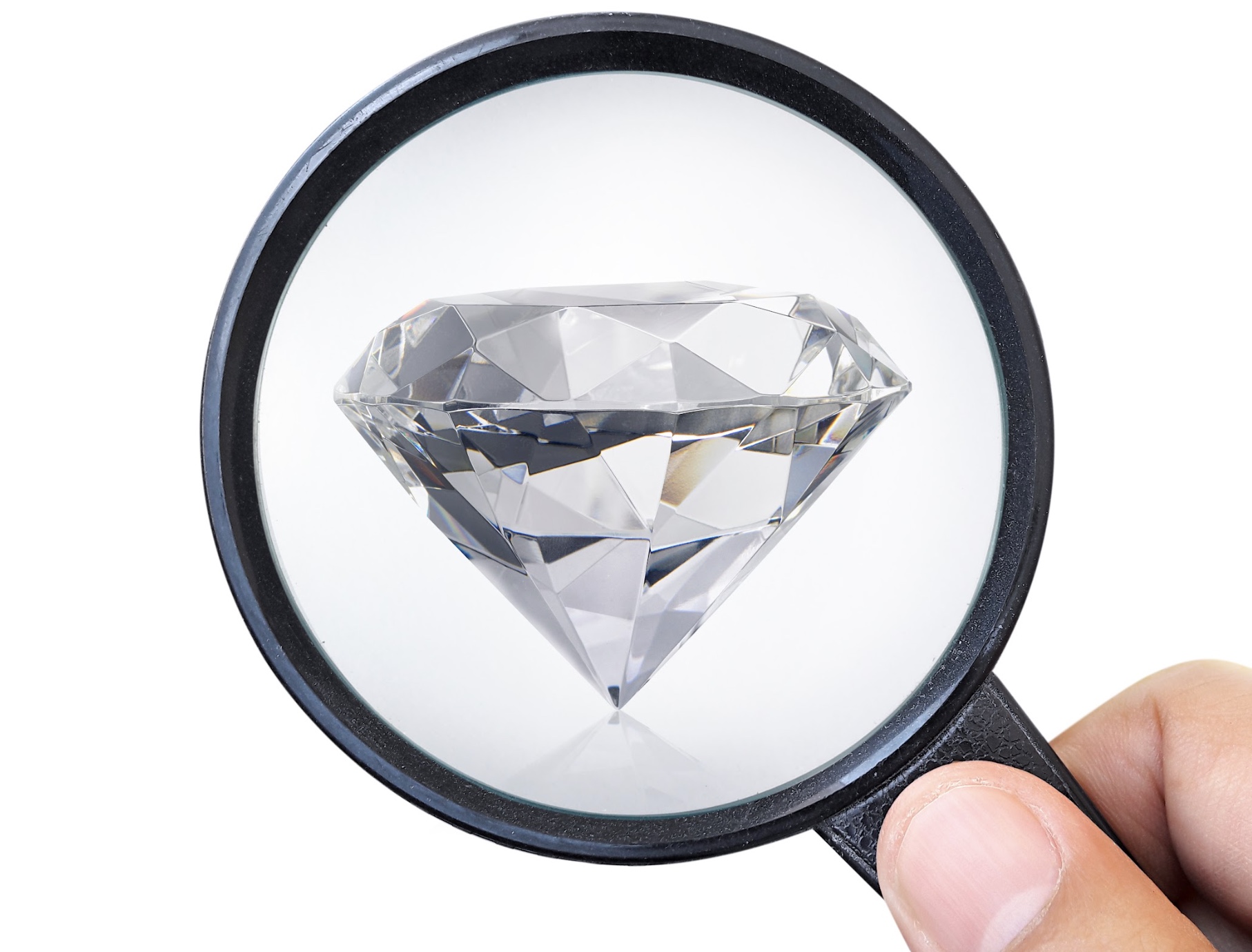To an inexperienced eye, diamonds and other colorless stones look the same. That’s why it can be challenging to determine whether a diamond is authentic or fake.
Durability, elegance, brilliance, and market demand make these invaluable stones expensive. And these values make diamonds highly valuable compared to others. Because of supply issues, labor, and environmental concerns, a lab diamond offers a great alternative to real diamond stones. This option features the same quality and attributes as naturally-mined diamonds but is less costly than its manufactured counterparts.
If you’re looking to buy real diamonds, it’s crucial to know how to spot genuine ones from fakes. Below are some of the tests you can perform at home.
Contents
1. Drop It In A Glass Of Water
This method only works on unset diamonds, so perform this test before having your precious gem set by jewelers. Use a drinking glass and fill it with water. Drop the stone in question and see if it floats or sinks. Genuine diamonds possess high density and should sink instead of float. If it does the latter, your stone is likely fake.
However, this test is inconclusive, as other counterfeit diamonds can also sink. It’s best to use different techniques discussed below.
2. Perform The Fog Test
Because diamonds can conduct and disperse heat quickly, some perform the fog test as an easy diamond testing method. Before starting the test, ensure that your stone is clean and free from oils and other debris. All you have to do is hold the ring and generate fog by breathing onto the stone. The fog should clear up fast. Otherwise, you may have a fake diamond in your hands.
3. Use A Magnifying Glass Or Loupe
Professionals often use the loupe to take a closer look at a diamond. This device works like a magnifying glass that gemologists use to look at the stone’s flaws and imperfections. Using the loupe and checking for discolorations helps experts rate a stone’s clarity and class, which impacts the price.
Some online merchants sell loupes for amateur use, so you can purchase one from them. Otherwise, you can ask jewelers to take a look at your precious stones before planning a proposal or an upcoming wedding. Mined diamonds typically have blemishes and inclusions, while fakes often look perfect.
However, note that some diamonds are pure and flawless and command high prices on the market. So, don’t fret if you don’t see any blemish, as you might be keeping a really expensive gem or its lab-created counterpart.
4. Look At The Shank
Another effortless method of checking diamond authenticity is by checking the setting and craftsmanship. Diamonds are durable, and real ones should only be set in fine metal, showing good and detailed craftsmanship.
Check the ring shank because it can provide information about the metal and stone used. Look for signs indicating diamond weight as expressed in carats. If you see a CZ marking, it’s a fake, as these stand for cubic zirconia, one of the most popular and cheapest diamond stand-ins.
Meanwhile, an AU marking means gold, while PT stands for platinum, two of the most common metals in diamond rings. Additionally, it may carry other information, for instance, 14k (karats) or 585 and 18k or 750. These engravings represent the metals’ purity, with pure gold representing 24k.
5. Refraction And Reflection Tests
A diamond has distinct optical properties enabling it to break and reflect light rays. Refractivity and reflectivity are two of diamonds’ primary traits. Refractivity refers to the light direction, while reflectivity describes the quality and amount of light bouncing off the gem. These result in the precious stone’s sparkle and brilliance or “fire”. Other stones don’t have the luster because they don’t have these properties.
Testing a diamond’s ability to refract or bend and reflect light can be done at home using simple materials.
- The Read-Through Test
Also called the newspaper test, this method checks refractivity by going to a well-lit area and placing a loose diamond upside down over the letters in a newspaper. A real diamond’s refractive property should prevent you from reading through the newspaper text.
If you don’t have a newspaper, use blank paper and draw a small dot on it. Put the stone upside down on the dot. You shouldn’t be able to see the dot on the gem if it’s real.
- Check How It Sparkles
A diamond’s sparkle is largely dependent on its cut. The better the cut, the brighter and sparkly your stone would be. An excellently-cut diamond reflects light well, while a poorly designed one will have several dark and dull areas.
Regardless, suppose you hold a diamond up in the light. In that case, it should be glistening with bright light, indicating brilliance and generating colorful light reflections, representing “fire”—all in a breath-taking pattern.

Concluding Thoughts
These are a few of the many ways you can check the authenticity of diamond stones. However, not all of these methods are conclusive, as lab-created stones like moissanite may possess some of the natural diamonds’ properties.
To ensure that you’re getting an authentic gem, look for certification from reputable diamond-testing bodies and purchase from reliable jewelry shops. Hiring a trained jeweler for a professional assessment is best if you want your diamonds tested.
